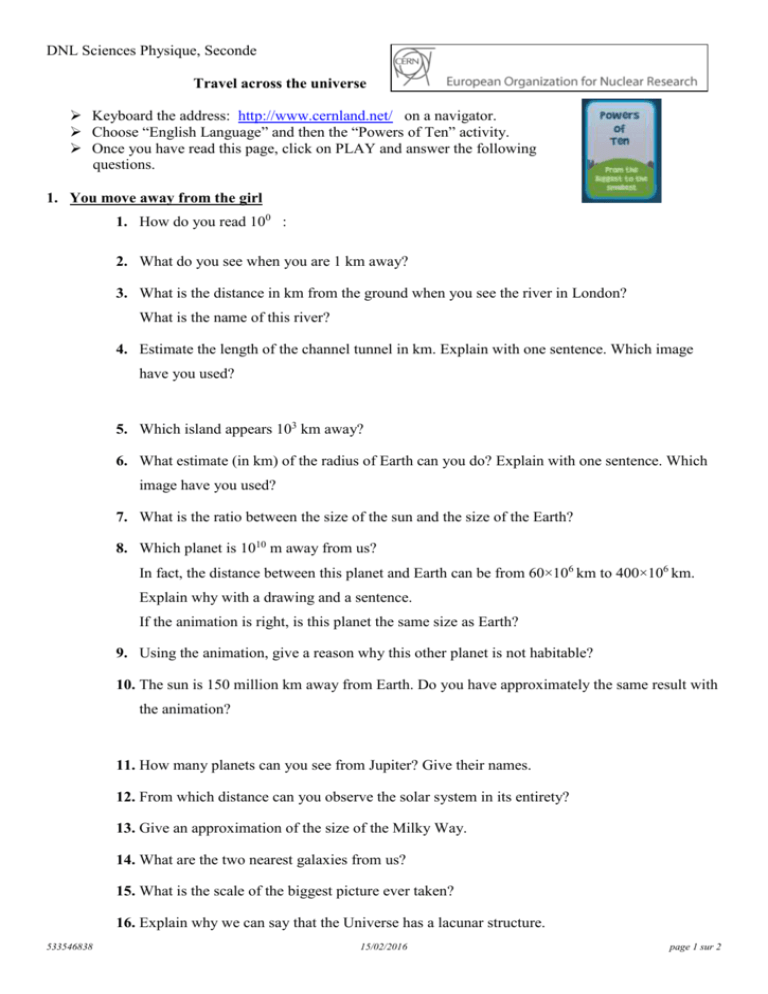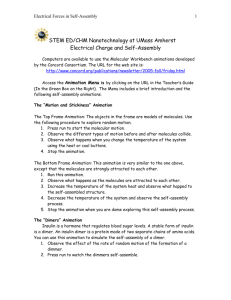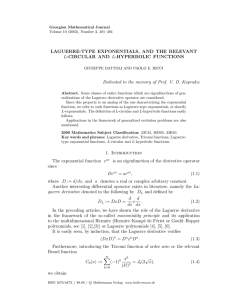Prefix
advertisement

DNL Sciences Physique, Seconde Travel across the universe Keyboard the address: http://www.cernland.net/ on a navigator. Choose “English Language” and then the “Powers of Ten” activity. Once you have read this page, click on PLAY and answer the following questions. 1. You move away from the girl 1. How do you read 100 : 2. What do you see when you are 1 km away? 3. What is the distance in km from the ground when you see the river in London? What is the name of this river? 4. Estimate the length of the channel tunnel in km. Explain with one sentence. Which image have you used? 5. Which island appears 103 km away? 6. What estimate (in km) of the radius of Earth can you do? Explain with one sentence. Which image have you used? 7. What is the ratio between the size of the sun and the size of the Earth? 8. Which planet is 1010 m away from us? In fact, the distance between this planet and Earth can be from 60×106 km to 400×106 km. Explain why with a drawing and a sentence. If the animation is right, is this planet the same size as Earth? 9. Using the animation, give a reason why this other planet is not habitable? 10. The sun is 150 million km away from Earth. Do you have approximately the same result with the animation? 11. How many planets can you see from Jupiter? Give their names. 12. From which distance can you observe the solar system in its entirety? 13. Give an approximation of the size of the Milky Way. 14. What are the two nearest galaxies from us? 15. What is the scale of the biggest picture ever taken? 16. Explain why we can say that the Universe has a lacunar structure. 533546838 15/02/2016 page 1 sur 2 2. You get closer from the girl 1. What is (in mm) the width of a human hair? 2. Do you think we can observe the nucleus of a cell with a microscope (micro means 10-6)? 3. At what distance (in meters and in micrometers) can you observe a DNA molecule? 4. What is the order of magnitude of a carbon atom? 5. How many electrons does it possess? How are they charged? 6. Where is the mass of the atom concentrated? 7. How many protons and neutrons are there in the carbon nucleus? How are they charged? 8. Are protons and neutrons the smallest particles? Explain. 9. Explain why we can say that matter has a lacunar structure. Notes professeur : Source initiale : http://europhys.stav.free.fr/DNL.htm Lien faux, activité plus en relation avec l’animation. 533546838 15/02/2016 page 2 sur 2











